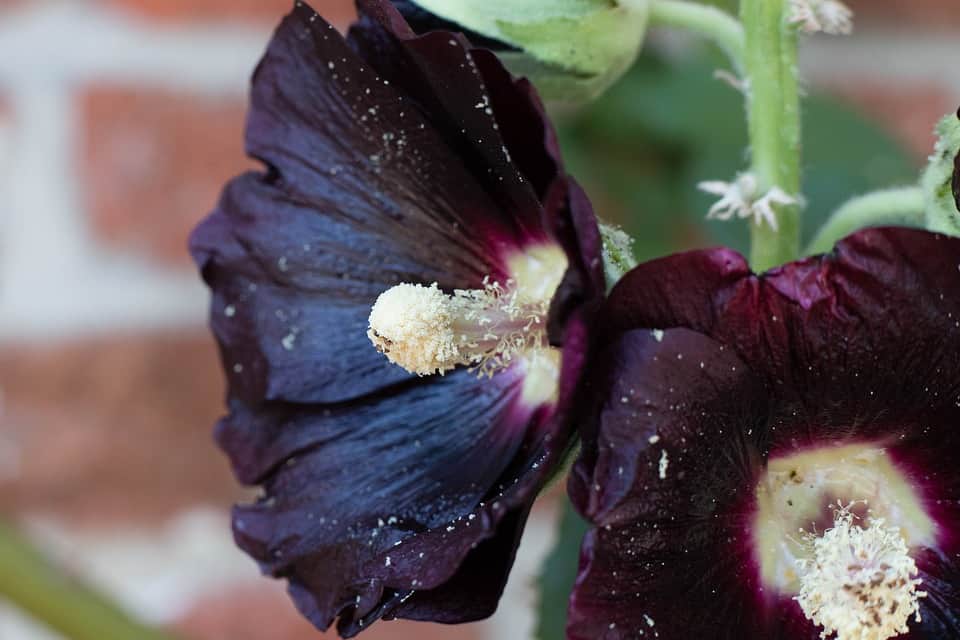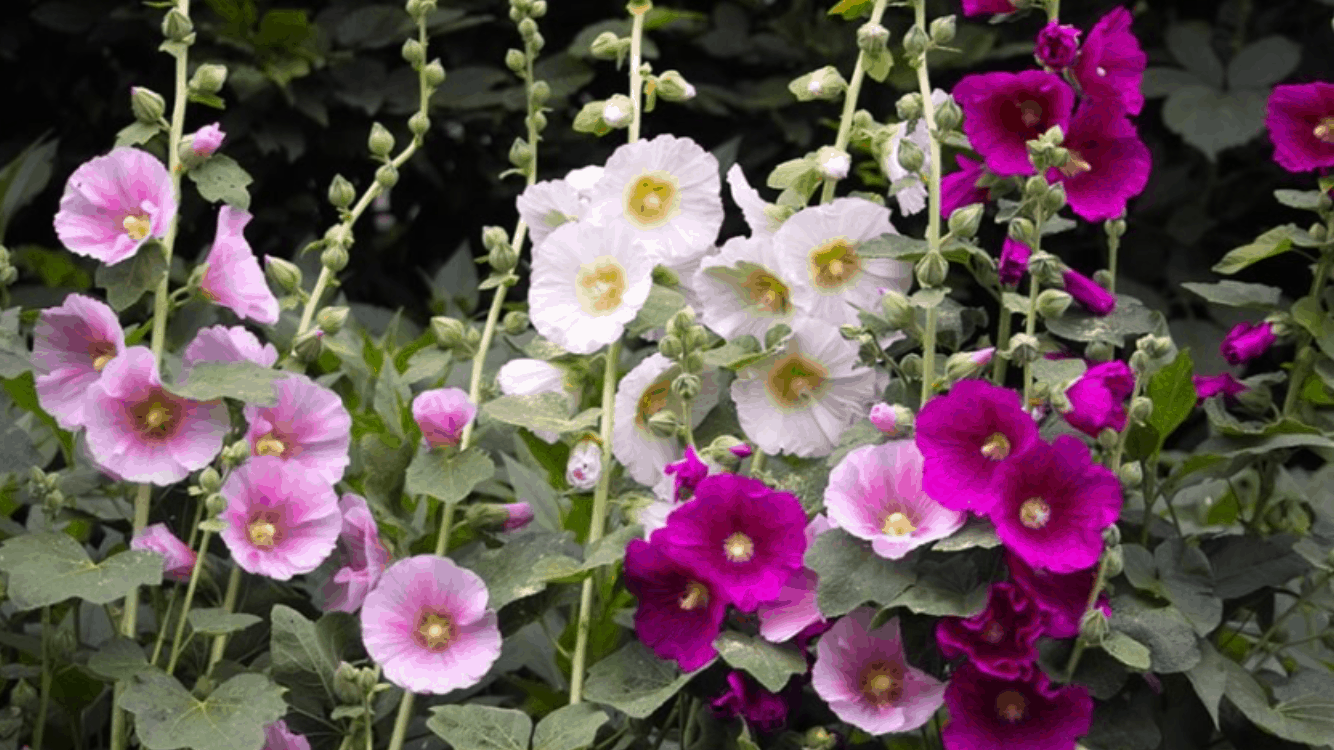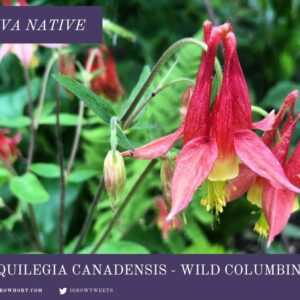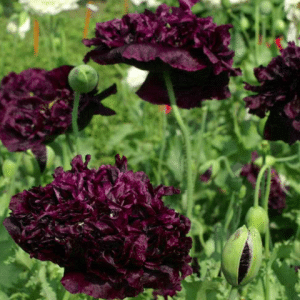Hollyhock Seeds – Alcea rugosa – Romance Mixed Colors Easy to Grow Garden Pollinator Plants from Seed to benefit, Bees, Hummingbirds and Butterflies.
Sow Hollyhocks for flowers early Summer, my colection of colors are cross-pollinated and will expect some interesting variations, mixed single colors and shades. Including, Burgundy shades, Pink shades, Shades of Red, Cherry, Black, Mauve and Peach
Hollyhocks best grown as an annual or bi-annual and allowed to self-set seed, however in the perfect location they can behave like a short-lived perennial.
Germinate seeds in early Spring or start in Fall and over-winter young plants for planting the following year.
Popular with Hummingbirds and Butterflies the colorful single-flowered Alcea is best grown for attracting pollinators.
Grow Hollyhocks in full sun where free-draining soil does not dry out completely, irrigate during dry spells for best performance.
Old fashioned garden perennials often make a comeback and the Hollyhock is still incredibly popular
Often seen as a carnival of mixed colors, adds a vibrant flowering parade of colors for subtle blends and contrast.
Easy to grow from seed the plants will benefit from a rich growing medium best grown as tall border short-lived garden perennial.
Parent plants will readily set seed and cross-pollination is likely resulting in some colorful variations after a number of years.
SOWING TIPS: Average of 25+ seeds per pack
Cold Stratification or Direct Sowing: Recommended. (See Winter Jug Method )
Direct sow seeds in fall and allow seeds to naturally cold stratify. When starting seeds indoors, sow finely and barely cover seeds with soil. I recommend sowing these seeds, direct in Fall on a prepared seedbed or garden container, water well, and protect from winter weather with a fabric fleece if some seeds germinate early. Also known as cold stratification and can be completed anytime of the year by placing seed packs in a cool drawer of a refrigerator for 4-12 weeks to break seed dormancy.
- Sow direct in a prepared weed-free seedbed
- Cold frame sheltered location in small pots outdoors
- Under lights indoor grow room
- Bright windowsill with drip tray and propagator cover
I like to grow in pots this way you can break dormancy, simply by moving the pots around and most seeds germinate in batches, care must be taken when picking out to avoid disturbing emerging seedlings.
Pot young plants on until large enough to plant out, this native plant mix prefers poor soil in full sun.
Alternatively use the following techniques to improve germination
MOIST STRATIFICATION will help seed germination~ to do so, place seeds in moist sand or peat in the refrigerator for about 6 weeks prior to planting. Keep the medium and seeds in a sealed ziplock baggie to hold in moisture. Remove them after the stratification period, and plant them in the seed mix or.
or HOT WATER SCARIFYING can be used to speed up the germination process, simple drop the seeds into pre-boiled water that has chilled for 30 seconds allow them to soak for 24hrs before sowing.
Keep soil moist, not wet. At the end of the cold stratification, keep pots covered and place them in a warm, sunny location. Remove zip-lock bag as seedlings appear.
Easy to grow sow seed and inert mixer, direct where you would like them to flower, in Fall or Early Spring, or start in small pots on a window sill several weeks before the last frost in your area.
Seed Count:
Average of 25+ seeds per pack, shipped tracked for your convenience spend $20 or more in one transaction and get free shipping.
Native plants maintain balance and provide habitat and eco-systems for resident and migratory wildlife. Due to many years of ecological destruction, development and toxic pollution many native wild flowers, and wildlife are under-threat of extinction.
We all have an important role to play, no matter how small your garden or balcony a few plant pots filled with natives instead of alien ornamentals of genetic hybrids that offer very little to no benefit to feeding insects and birds.
Time to make a small difference on a global scale and encourage our neighbors friends and families to sow a patchwork quilt of native wildflowers like a blanket to protect our sacred planet!







